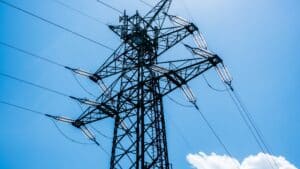Without a doubt, power supply is vital in our daily lives, but we often encounter various electrical problems that can affect its quality and stability. These problems can have negative consequences for our electronic equipment and in some cases, even put our safety at risk.
The most recent Electric System Reliability Report, published by the Energy Regulatory Commission in Mexico, recorded a total of 13,779 disturbances in the National Electric System (SEN), throughout 2021; of which 3,499 derived in load interruptions.
According to the Institute of Electrical and Electronics Engineers (IEEE), we can list 9 electrical problems that we will study below, as well as review the consequences they can have on electronic devices.

1. Interruptions
These are events in which there is a total power outage. They can be caused by various reasons such as lightning, downed power lines, over-demands, accidents and natural disasters. These interruptions can be annoying and, in some cases, cause economic losses. To minimize their impact, it is recommended to have an Uninterruptible Power System and a power generator.
There are three types of power interruptions:
Momentary: voltages lower than 10% of the nominal voltage, with duration between 0.0166 and 3 seconds.
Temporary: voltages lower than 10% of the nominal voltage, with duration between 3 and 60 seconds.
Sustained: voltages of 0 with duration greater than 60 seconds.
2. Low voltage
This event occurs when the electrical voltage drops below normal levels for a given period of time. This may be due to starting large loads, starting heavy machinery, or equipment failure. Low voltage can cause electrical equipment to malfunction and even damage it permanently.
Within this category, there are three types:
Instantaneous: voltages between 10% and 90% of nominal voltage with duration between 0.0166 – 0.5 seconds.
Momentary: voltages between 10% and 90% of nominal voltage with duration between 0.5 – 3 seconds.
Temporary: voltages between 10% and 90% of nominal voltage with duration between 3 and 60 seconds.

3. High voltage
Occurs when the voltage is higher than normal. This may be due to lightning and can increase the line voltage up to 6000 volts in excess. This phenomenon causes overloading of electrical equipment, which in turn will cause damage or malfunction.
There are three types of high voltage:
Instantaneous: voltages between 110% and 180% of nominal voltage with duration between 0.0166 – 0.5 seconds.
Momentary: voltages between 110% and 140% of rated voltage with duration between 0.5 – 3 seconds
Temporary: voltages between 110% and 120% of nominal voltage with duration between 3 – 60 seconds.
4. Long duration variations
These are events that are produced when voltages exceed the limits of +/- 10% of the nominal value with a duration of more than 60 seconds. This phenomenon is common in industrial environments, due to the overload in the electrical network and the energy demand in these scenarios. To solve this problem it is advisable to have a power conditioner. Thanks to this equipment the voltage is permanently stable.
5. Electrical noise
This refers to unwanted electromagnetic interference present in the power supply. This can be due to interference produced by transmitters, welding machines, printers, lightning, etc. Electrical noise can adversely affect the performance of electronic devices, cause data errors and generate annoying noise in audio equipment. High frequency filters are recommended to mitigate this problem.

6. Frequency variation
The electrical frequency must be kept constant (+/- 0.5%) for the equipment to operate correctly. However, frequency variations may occur at large generator interconnection points or at cogenerator interconnection points. These variations can affect the performance of electrical devices, especially those that depend on a precise frequency, such as industrial equipment or medical equipment.
7. Transient overvoltage/voltage spike
Overvoltage consists of short-duration voltage spikes that exceed normal levels. These spikes can be caused by lightning, switching of loads on the power supply network, transfers with generators, heating, ventilation and air conditioning units, switching of inductive loads and/or power factor correctors. Transients can severely damage sensitive electronic devices. To avoid these electrical problems, the installation of a surge suppressor is recommended.
8. Transient overcurrent/peak current
These are short duration current spikes. They are caused by lightning, switching of loads in the power supply network, heating, ventilation and air conditioning units, as well as by switchover of inductive loads. In this case, the use of starters and variable speed drives is recommended to minimize the impact.

9. Harmonic distortion
It is caused by non-linear loads (motors, copiers, fax machines, etc.) connected to the same network as computer equipment and/or critical applications. Harmonic distortion can generate additional heat in the equipment and affect its energy efficiency, as well as contribute to the decrease of the power factor. To solve this electrical problem, a harmonic filter is recommended.
These electrical problems can have adverse effects on the life and performance of your electrical and electronic equipment. Learn about the power quality solutions that Industronic has at your disposal. In addition, our electrical problems team is ready to provide you with the appropriate advice, according to your needs.